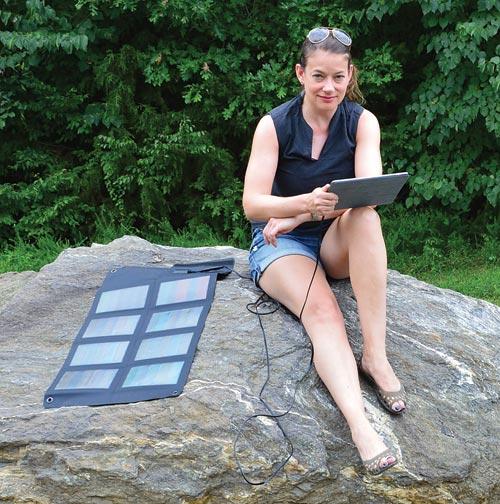By Jeff Yago, P.E., CEM
When talking to fellow preppers at self-reliance expos across the country, I am always impressed by how many already have long-term food supplies, stored water, medical supplies, an emergency radio, guns, ammunition, alternative cook stove, fire starting materials, and bug-out bags. However, as soon as the conversation turns to emergency power it’s apparent they are totally relying on a backup generator.
Most believe their portable generator solves the problem — end of story. But what happens if the generator fails or the power outage lasts longer than their fuel supply? Most residential-size generators are not designed for an extended power outage and their warranty usually indicates a runtime in hours per year, not months. Even larger whole-house generators have runtime limitations, not to mention the ability to drain a 500-gallon tank of propane in a week of continuous operation. Parts of Louisiana after Hurricane Katrina and Long Island after Hurricane Sandy were without power for months, not weeks. Can your emergency backup plan meet a utility outage lasting this long? Perhaps it’s time to reassess.
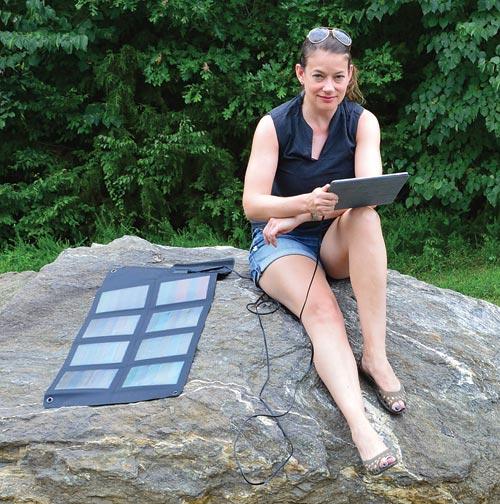
Electric grid concerns
A large part of the electric grid was constructed in the 1960s, and many cross-country distribution lines are way past their design life. Finding a utility right-of-way for hundreds of miles of new power lines across today’s crowded landscape borders on the impossible. At the date of this article, more than 100 major coal-fired power plants are being dismantled due to their inability to meet new EPA emission restrictions, yet coal is still our most abundant fuel source. Not only were these plants fully operational, they were needed to operate at full capacity to help meet last winter’s peak power demand. It can take up to 10 years to design, permit, and actually build a new power plant, yet there are currently no plans to replace these decommissioned plants due to the high cost of meeting these new EPA emission regulations.
As the utility infrastructure continues to age and generating capacity continues to fall, the steady increase in electric demand will soon develop into a perfect storm. Power outages now affect larger numbers of households when they do occur, and can take much longer to repair due to these problems.
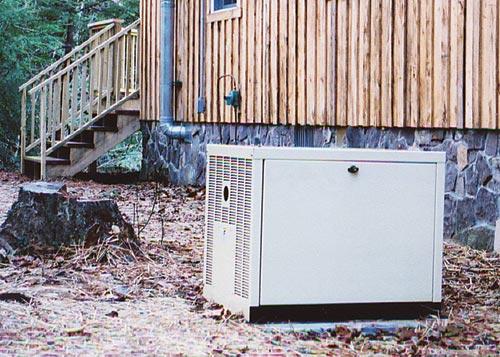
Security concerns
Multiple congressional studies and military reports are now telling us some of the computer systems that are used to control these central power plants and balance the constantly changing power flows throughout the national grid are being compromised by hacking. These computer systems face thousands of daily attempts by unknown groups to penetrate and insert malicious software code.
There has been little or no system damage to date, since most of the computer viruses that are discovered appear to be designed to lay dormant until they receive a specific command or until a date is reached to activate. Unfortunately, utility experts acknowledge there most likely are embedded viruses they have not found. Altering the automated control software in a power plant could cause anything from a major generator or transformer meltdown, to triggering a nationwide power outage.
In the past two years there has been a noticeable increase in utility-related vandalism including multiple electrical substations and underground communication cables at very remote locations. This has included destroying high-voltage transformers using large-caliber rifles, and cutting fiber-optic communication cables. The cables carry extensive phone and internet communications between cities, and can provide alarms to distant utility control centers. These electrical substations are surrounded by barbed-wire fences and have multiple security cameras. The fiber-optic cables were routed through armor-plated steel conduits located inside locked underground concrete utility vaults.
These attacks are clearly being carried out by well-trained groups, yet mainstream news wants us to believe all this is the work of a few teenagers out Saturday night with their dad’s squirrel-gun and a rusty hacksaw. Security experts believe these isolated attacks are practice and that these groups are testing response in preparation for future simultaneous attacks at multiple points on the electric grid. To date, none of the perpetrators have been identified and nothing was found on security camera tapes.
I am afraid the overall grid reliability we have enjoyed for many years with only an occasional localized power interruption may be coming to an end. I feel it’s time to become much more proactive in developing your own long-term emergency power plan.
 Regardless if caused by a major storm, failed equipment, sabotage, EMP, or sunspots, we most likely are going to experience far more power outages in the future. Your emergency generator and fuel supply will be a real lifesaver during a typical power outage lasting a few days. However, for extended power outages, there are many solar products that can make life much easier for you and your family long after the generator has failed or the fuel tank is empty.
Regardless if caused by a major storm, failed equipment, sabotage, EMP, or sunspots, we most likely are going to experience far more power outages in the future. Your emergency generator and fuel supply will be a real lifesaver during a typical power outage lasting a few days. However, for extended power outages, there are many solar products that can make life much easier for you and your family long after the generator has failed or the fuel tank is empty.
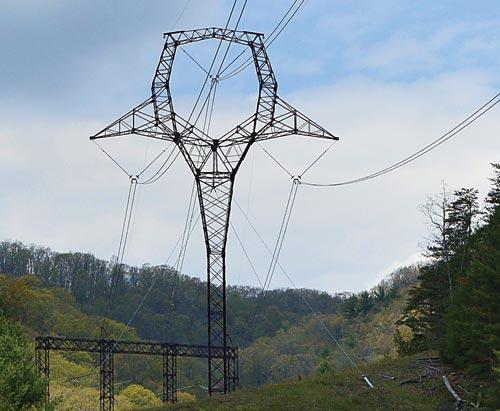
Emergency solar power
When planning life after generator, you first need to identify the specific electronic devices and electrical appliances you absolutely need to keep working, and then find a solar power solution for each. For example, you do not need to build an entire off-grid solar home to power a small DC refrigerator, a few LED lights, a CPAP machine, laptop computer, cell phone, or portable radio. Individual fold-up solar chargers are readily available to keep any of these devices operating indefinitely. If you have the optional “car charger” for each device, connecting to a solar charger is easy as most now also include a USB-type power adapter.
With a wall outlet never more than a few feet away, most homeowners have moved away from using any battery-powered devices, other than the TV remote. Some do not even own a flashlight, or at least one they can find and that actually works. However, you cannot take advantage of a solar battery charger during a power outage if you do not actually own any battery-powered devices!
To make this backup plan more workable, you need to realize it’s much easier during an extended power outage to keep a portable battery-powered television, radio, laptop, cell phone, or DVD player operating with solar power. Without the grid, the generator must run the entire time any AC-powered devices or their chargers are needed during a grid down event. Not only are battery-powered electronic devices a good emergency backup investment, they can be used during non-emergencies to keep the kids quiet on long car trips or when camping!
You can find the larger battery-powered appliances including 12-volt DC-powered flat screen televisions, DVD players, fans, small refrigerators, and satellite receivers in any RV or boating supply store. Sporting and camping supply outlets are also starting to carry all kinds of portable battery-powered devices to make camping more enjoyable. Here you can find small and lightweight multi-band radios, LED lanterns, LED flashlights, and water filters.
Finally, most manufacturers of CPAP and other medical monitoring devices usually offer an optional 12-volt DC adapter for emergency power. There are all types and sizes of fold-up and packaged solar charges now available that will keep each of these electronic devices operating long after the grid and the generator have died.
If you do not currently use rechargeable batteries in your portable electronic devices perhaps it’s time to start. Ever try to find flashlight batteries at the local grocery store two days before a hurricane hits? Do you think the stores will be re-stocked when the power outage lasts weeks? During an extended power outage all of your electronic devices, cell phones, and radios will be dead in a matter of days without rechargeable batteries and a way to recharge them.
Today’s NiMH battery technology provides much longer runtimes and can be recharged thousands of times. They also can hold their full charge during months of inactivity. (Note — my July 2013 article in Issue #142 of Backwoods Home Magazine compares the new types of rechargeable batteries and can be a helpful reference when you are ready to convert to rechargeable batteries in all your portable electronic devices.)
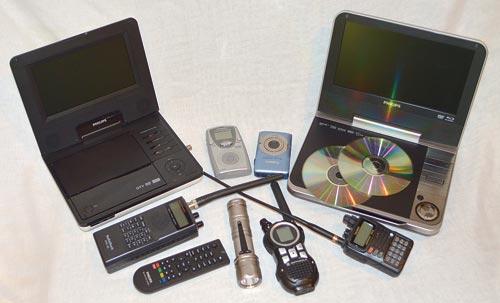
Fold-up solar chargers
All preppers should own several different sizes and types of fold-up solar chargers, regardless of lifestyle or location. While the smaller 5- to 10-watt solar chargers are perfect for charging cell phones, LED flashlights, and pocket radios, the larger 25- to 40-watt fold-up solar modules can easily charge an iPad or laptop computer. Some types of fold-up solar chargers include adapters that allow linking multiple chargers together to provide even more power to operate the larger communication and survival equipment.
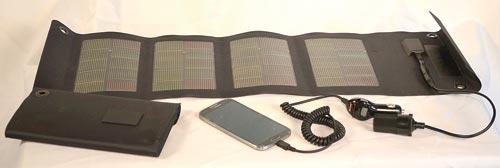
Battery-based solar chargers
Unlike the small fold-up solar chargers that charge the separate batteries inside a cell phone or small electronic device, some larger solar chargers have their own built-in high-capacity battery. Some models even include a small inverter to power 120-volt AC electrical equipment. While AC power is much more convenient than being limited to powering only those devices having a DC charging adapter, the capacity of these built-in inverters and batteries are limited to powering small appliances such as a flat screen TV or satellite receiver. Do not expect these portable solar chargers to power your kitchen appliances!
If a wide-area power outage lasts months instead of days, it is highly doubtful you will even have anything left to put in a refrigerator, or need to operate major kitchen appliances. Concentrate on only those small electronic devices that can keep you in communication with the outside world and out of the dark.
Selecting a fold-up solar charger with a built-in battery allows you to charge the battery during the day, then use the battery to power a portable radio or LED lights after the sun goes down.
Portable solar systems sized to provide temporary power for larger 120-volt AC appliances or power tools have their batteries and inverters mounted in a handcart or rugged case with sturdy lifting handles. Their solar modules are detachable and can be easily separated from the battery pack to face the sun or can be loaded into your vehicle if you have to “get out of Dodge.”
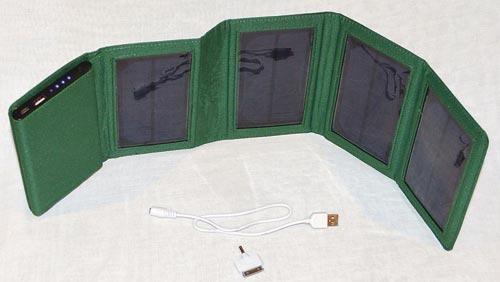
Conclusions
Relying only on a generator during a long-term power outage really limits your options. However, relying on a single one-size-fits-all portable solar charger also has its limitations. At a minimum, you should have a small fold-up solar charger to keep each of your cell phones charged during an extended power outage.
You should also have a mid-sized solar charger designed to recharge multiple “AA” size batteries and a large supply of these rechargeable batteries. When buying portable radios, LED flashlights, and other electronic devices, try to standardize on only those models using the “AA” battery size. The smaller “AAA” batteries have a very limited runtime and the larger “C” and “D” flashlight batteries are rarely used to power today’s smaller electronic devices. Having all your battery-powered devices using the same size battery greatly simplifies the recharging process and limits the number of adapters required.
Finally, you should consider adding one of the higher-wattage solar power units that include an internal deep-cycle battery and multiple voltage outputs. Most models include a 120-volt AC outlet, 12-volt DC “cigar-type” receptacle, and multiple USB-type outlets. If the conditions where you live get to the point that you do have to bug out, all of the solar systems described in this article can be easily folded up and placed in a backpack or vehicle trunk.
Sources
Trying to select the right solar charger for your specific power requirements can be intimidating, especially when a quick Internet search produces thousands of links.
Comparing competing products is also difficult since there are no standardized terms or performance ratings used by the various manufacturers. The following manufacturer short list is not intended to be all-inclusive, although I have tried to narrow your search to those brands with which I have personal knowledge and some past experience.
I feel those I have listed are ideal for your emergency solar charging requirements, and they all fold up into compact and lightweight packages if you do have to go mobile. While these clearly are not the lowest-cost models available, I have found these specific brands to be extremely rugged and well designed. You will need several different sizes of solar chargers to meet all of your power needs.
Suppliers
Smaller fold-up solar chargers:
Enerplex www.goenerplex.com
Endless Sun Solar www.endlesssunsolar.com
P3Solar www.p3solar.com, 520-775-1390
Secur www.securproducts.com, 855-452-8388
Suntactics www.suntactics.com, 888-308-4786
Larger fold-up solar chargers:
Aspect Solar www.aspectsolar.com, 877-717-7778
Goal Zero www.goalzero.com, 888-794-6250
Strongvolt www.strongvolt.com
Sunjack www.sunjack.com
Sun Ready Power www.sunreadypower.com, 208-841-2189
Sol Pro www.solpro.com, 888-539-7035


